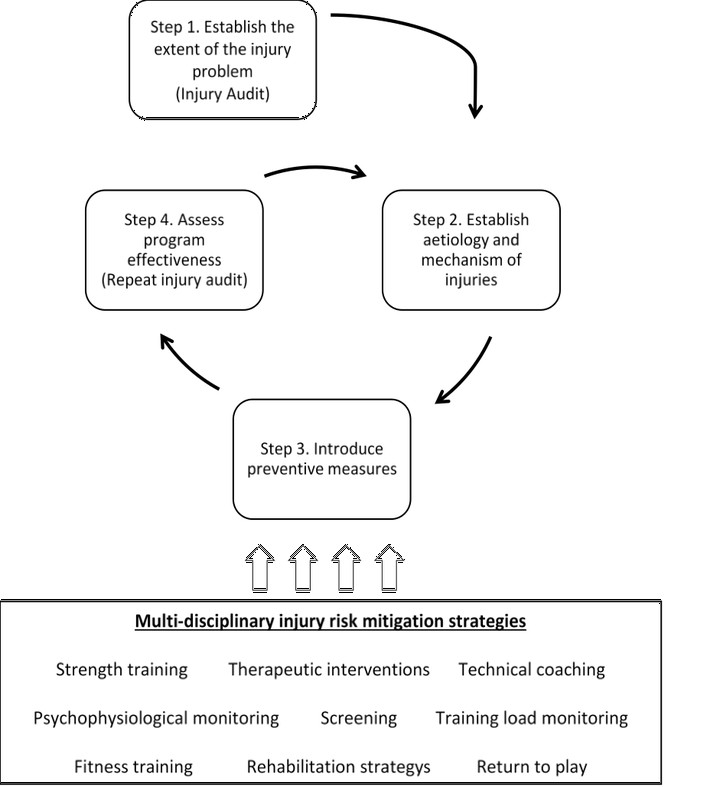The Efficacy of an Iterative "Sequence of Prevention" Approach to Injury Prevention by a Multidisciplinary Team in Professional Rugby Union
 #
#
Abstract
Due to the complex systems nature of injuries, the responsibility for injury risk management cannot lie solely within a single domain of professional practice. Interdisciplinary collaboration between technical/tactical coaches, strength and conditioning coaches, team doctors, physical therapists and sport scientists is likely to have a meaningful impact on injury risk. This study describes the application and efficacy of a multidisciplinary approach to reducing team injury risk in professional rugby union. Epidemiological injury data was collected from a professional rugby union team for 5 consecutive seasons. Following each season, these data informed multidisciplinary intervention strategies to reduce injury risk. The effectiveness of these strategies was iteratively assessed to inform future interventions. Specific examples of intervention strategies are provided. Overall team injury burden displayed a likely beneficial decrease (-8%; injury rate ratio (IRR) 0.9, 95%CI 0.9-1.0) from 2012 to 2016. This was achieved through a most likely beneficial improvement in non-contact injury burden (-39%; IRR 0.6, 95%CI 0.6-0.7). Contact injury burden was increased, but to a lesser extent (+18%; IRR 1.2, 95%CI 1.1-1.3, most likely harmful) during the same period. The range of skills required to effectively manage complex injury phenomena in professional collision sport crosses disciplinary boundaries. The evidence presented here points to the effectiveness of a multidisciplinary approach to reducing injury risk. This model will likely be applicable across a range of team and individual sports.